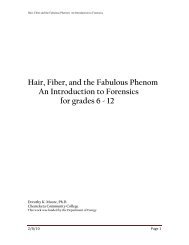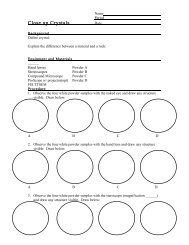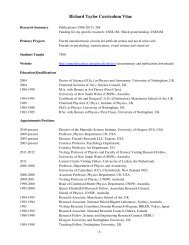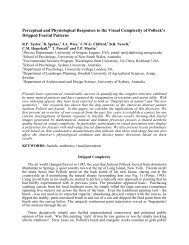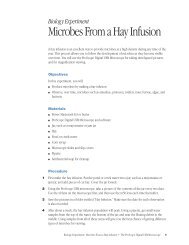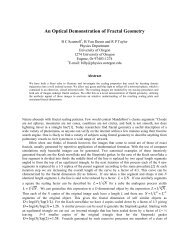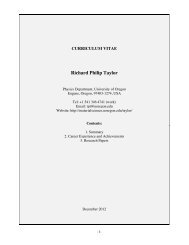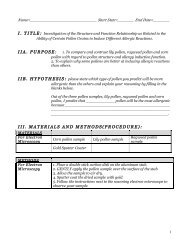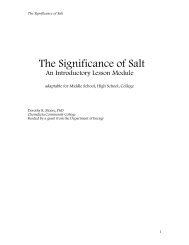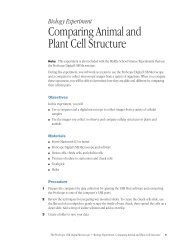December 2004 - Materials Science Institute - University of Oregon
December 2004 - Materials Science Institute - University of Oregon
December 2004 - Materials Science Institute - University of Oregon
Create successful ePaper yourself
Turn your PDF publications into a flip-book with our unique Google optimized e-Paper software.
<strong>of</strong> northern Alaska consisted <strong>of</strong> a mixed canopy that included<br />
deciduous conifers with an understory <strong>of</strong> fl owering plants,<br />
ferns and cycads. Today mixed coniferous forests occupy a<br />
wide but well-defi ned range <strong>of</strong> climates with mean annual<br />
temperatures from three to 13 degrees Celsius (37 to 55 degrees<br />
Fahrenheit), suggesting that the average yearly temperature<br />
for northern Alaska during the Cretaceous was similar.<br />
One <strong>of</strong> the striking aspects <strong>of</strong> the modern Arctic is the angle<br />
<strong>of</strong> sunlight and the length <strong>of</strong> the day—commonly, though mistakenly,<br />
referred to as six months <strong>of</strong> daylight and six months<br />
<strong>of</strong> night. In actuality, north <strong>of</strong> the Arctic Circle, darkness occupies<br />
a longer and longer part <strong>of</strong> each day until the winter<br />
solstice (<strong>December</strong> 22), when the sun does not rise. During the<br />
Cretaceous, northern Alaska was even farther north than it is<br />
today, and so the dinosaurs that lived there would have needed<br />
mechanisms to cope with both the cold and the dark.<br />
We do not know the full explanation <strong>of</strong> how they survived.<br />
It seems unlikely that a 10-meter-long (35-foot-long) hadrosaur<br />
dug a hole in the ground and went into hibernation. But during<br />
times <strong>of</strong> environmental stress, some animals can lower their<br />
88 SCIENTIFIC AMERICAN DECEMBER <strong>2004</strong><br />
COPYRIGHT <strong>2004</strong> SCIENTIFIC AMERICAN, INC.<br />
CREDIT




